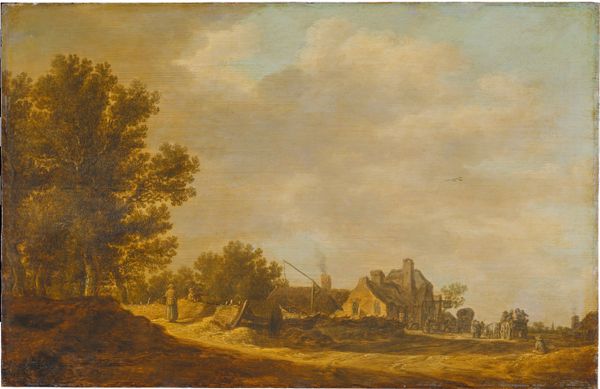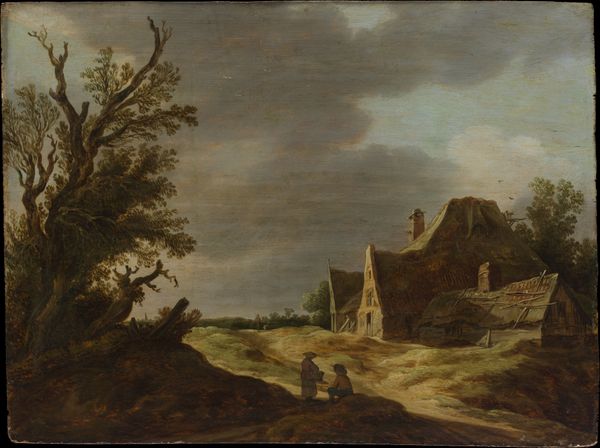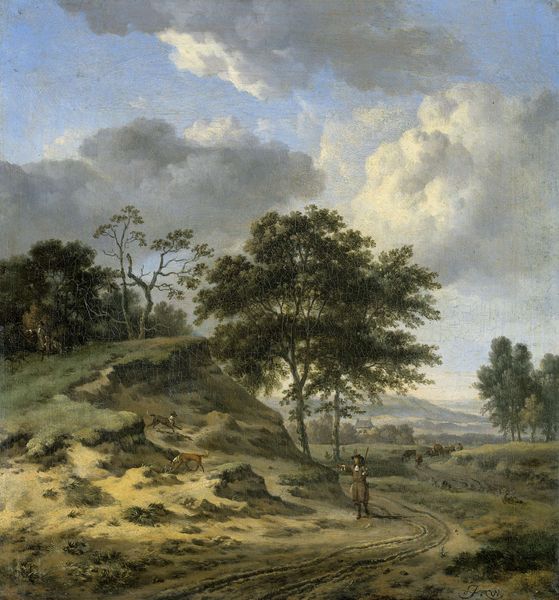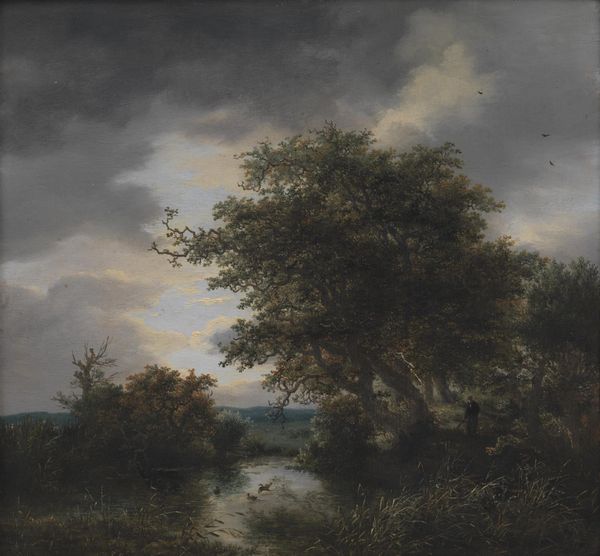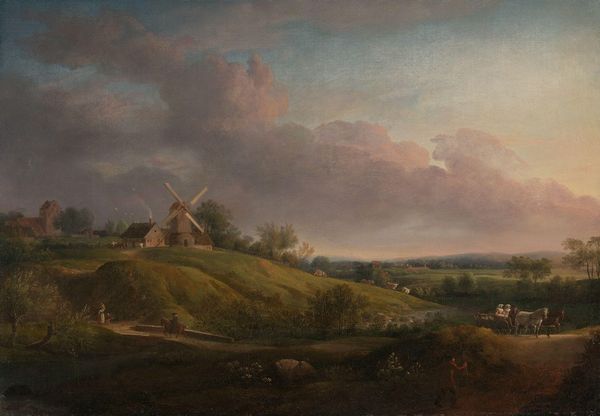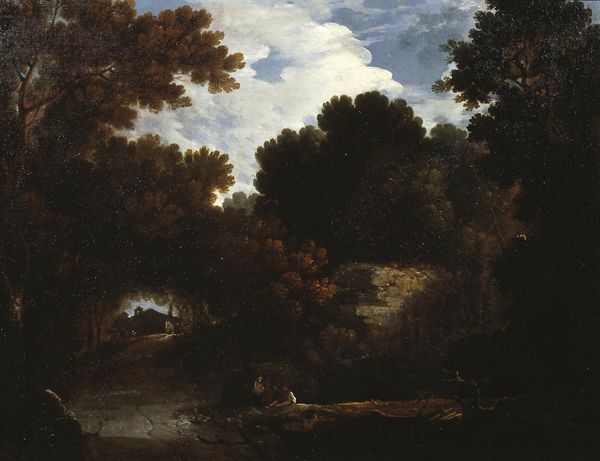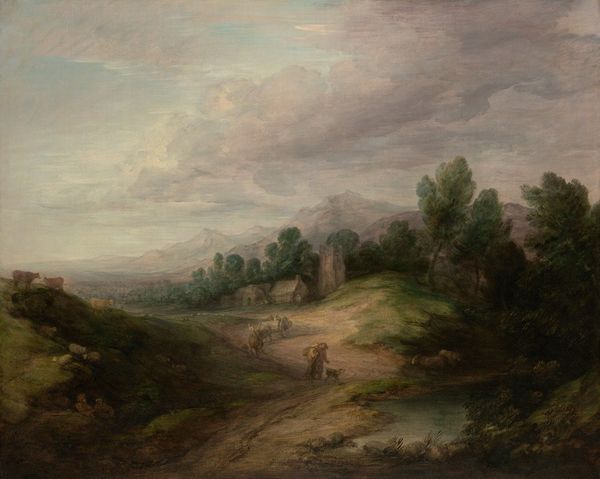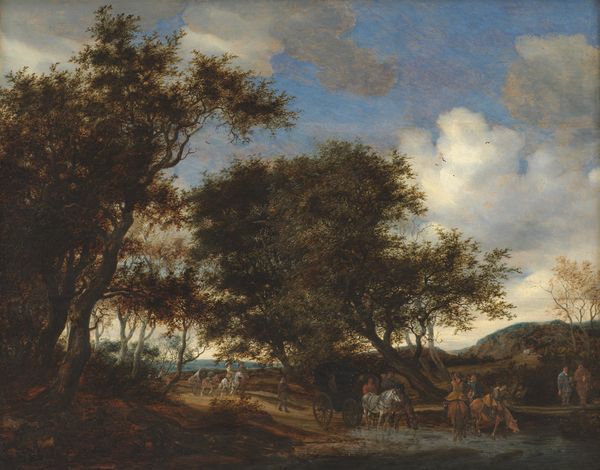
painting, oil-paint
#
baroque
#
dutch-golden-age
#
painting
#
oil-paint
#
landscape
#
genre-painting
#
realism
Dimensions: height 41.5 cm, width 60 cm, depth 4.5 cm
Copyright: Rijks Museum: Open Domain
Curator: Right, let's dive into this scene. Cornelis van Zwieten’s, using oil paint on what looks like wood panel, creates "Hilly Landscape with Peasant Cottage" back in 1653. A bit melancholy, wouldn't you say? Art Historian: A quiet drama, certainly. The cottage sits nestled, almost swallowed by the encroaching wilderness. Van Zwieten produced this work during the Dutch Golden Age, when landscape painting reflected the prosperity and burgeoning national identity. Curator: Absolutely, but let’s think about those pigments, too. Consider the cost of producing vibrant colors, importing materials. Van Zwieten, like other Dutch masters, was a consumer in a world driven by colonial trade networks. And notice how that influences his depiction of even this seemingly simple landscape scene. The details really suggest someone understood those realities of material extraction and use. Art Historian: Good point. That darker palette perhaps speaks to anxieties present beneath the surface of that Golden Age – anxieties around land ownership, the rise of mercantile class and shifting social structures as the old feudal systems broke. And of course the presence of rural inhabitants speaks of everyday lives outside the grand centres. Curator: And the layers involved! Building depth using material opacity is a key process to admire. Speaking to which, even the location is intriguing, and lack thereof. Hilly Landscape implies terrain familiar with the rise in real land surveying during this time. This also means landscape wasn't purely representational; it’s inherently linked to the idea of ownership and management. The fact of land enclosure in a nutshell. Art Historian: Exactly. Paintings like these weren’t simply pretty pictures; they served as documentation, validation even, of changing relationships between people and place. Landscapes became a symbol of national pride and cultural achievement. Note also the influence of other social factors such as artistic patronage by merchants who began demanding these exact paintings that featured ‘typical’ Dutch sceneries. Curator: It's so telling to note such landscapes as luxury commodities! Van Zwieten here encapsulates not just aesthetic value but hard political data with those oil paints. That labor now framed in ways so specific due to his historical conditions—so crucial and, dare I say, still undervalued today! Art Historian: Yes, analyzing van Zwieten's piece reveals the interwoven political and commercial nature of even what appears the humblest pastoral setting, thereby broadening the picture – literally.
Comments
No comments
Be the first to comment and join the conversation on the ultimate creative platform.


